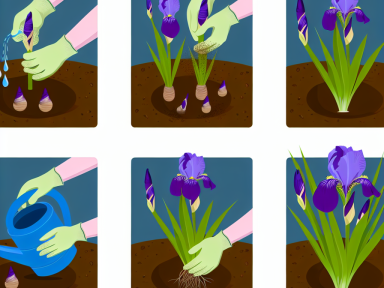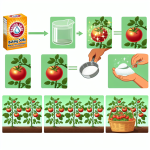Choosing the Right Location
The location you choose is critical for ensuring stunning iris blooms each year. Irises thrive in well-draining soil with plenty of sunlight. Here are some key considerations:
- **Sunlight:** Ensure that your irises receive at least 6 hours of direct sunlight daily.
- **Soil Quality:** Opt for sandy or loamy soil and avoid heavy clay. If you have poor drainage, consider raised beds or adding organic matter to improve soil condition.
- **Air Circulation:** Plant irises in areas with good airflow to reduce the risk of fungal diseases.
Proper Planting Techniques
How you plant your irises will significantly affect their health and blooming potential. Follow these guidelines for optimal results:
- **Timing:** Plant irises in late summer to early fall, giving them enough time to establish roots before winter.
- **Depth:** Place rhizomes just below the soil surface, with their tops slightly exposed to prevent rot.
- **Spacing:** Allow at least 12-24 inches between rhizomes to ensure proper airflow and room for growth.
Watering Wisdom
While irises are relatively drought-tolerant, correct watering practices are crucial:
- **Initial Watering:** Water newly planted irises thoroughly initially, promoting root establishment.
- **Regular Watering:** Water the plants deeply but infrequently, aiming for a balance that keeps the soil slightly moist but not soggy.
- **Seasonal Adjustment:** Reduce watering as the irises enter their dormant phase in late summer.
Nourishing Your Irises
Feeding your irises the right nutrients will boost their health and flowering capacity:
- **Fertilizing Schedule:** Apply a low-nitrogen fertilizer in early spring and just after blooming to avoid promoting leaf growth at the expense of flowers.
- **Organic Options:** Incorporate compost or well-rotted manure around the base of the plants to provide a slow-release nutrient supply.
- **Avoid Overfeeding:** Too much fertilizer, especially nitrogen, can cause lush foliage but poor blooms.
Deadheading and Dividing
Proper maintenance tasks such as deadheading and dividing help keep irises vibrant year after year:
- **Deadheading:** Remove spent blooms promptly to direct energy towards root and rhizome development.
- **Dividing:** Every 3-4 years, dig up and divide overgrown clumps of irises to rejuvenate them. Do this in late summer, ensuring each division has a healthy rhizome and a fan of leaves.
- **Pruning:** Trim back foliage to about 4-6 inches in fall to discourage pests and prepare plants for the winter.




GIPHY App Key not set. Please check settings